The first portion of this post explores the traditional process of creating videos from stories, covering key stages step by step. However, if you’re looking to dive straight into AI-powered methods, scroll down to the section titled Story Video Creation Through AI: Revolutionizing Content Production, where you get known about How to Create Videos from Written Stories with AI tools.
Introduction to the Art of Adaptation
Although the written story and video are two very different mediums, much more is shared in common regarding the story. Both forms start as an idea that evolves into a story. Both take the form of a plot, with an evolving storyline with a similar path and elements required to make the story viable. This isn’t a coincidence.
Television and movie creators, including news and documentary editors, fiction authors, and their production staff, intuitively know the power of story. They know how to take a developed plot and give an acceptable face to it and what elements need to come together to move an audience to the end of the selected delivery method.
The process of creating or changing an existing story by rephrasing it from a different medium to make it work there would be called adaptation. End to end, this is making an entirely new documentary from a script; There will always be ways to take an existing story and create a show for television, but when you understand the components and the process, you can begin to improve your chances of developing a show that will generate interest and be watched.
Understanding adaptation could also help you understand elements that make up good storytelling in your chosen medium. With so many aspects in common, bringing the skills together from any source to improve another will make for better storytelling for both focused and other kinds of purposes of video creation.

Definition of Adaptation
This is the adoption of elements within the narration to some form of aural visual rendition. Adaptation takes place after free reconstruction which should occur concerning either recording of some earlier captured text or a concept, then proceeding towards and into record and voice down on actualized conceptualization and construction.
Such triggers vary however these are a couple of main indicators leading toward one implementing adaptation. The first problem concerns the text, or rather the origin story from which the script emerges. A narrative text may be taken as a starting point for graph, drama, or music expressions before any sound project, any graphic project even a music project.
A narrative text can also be the basis of an artistic profession by transforming its internal units with a greater or lesser degree of variation or abstraction in the form of an evolutionary theory of science. In any case, inscriptions, print on paper, and virtual writing are concrete manifestations of a narrative text with elevated communicative status.
Books, stories, poems, novels, and letters are some examples of texts, having their particular configuration of speech but presenting more or less proximity to other texts through observable processes and functions. The differences can be superimposed as open preferences, which are in the unwritten or possible writings, with mnemonic foundations, which say that the stories are semi-fabulated events: the mainframes can suggest the characters, who the manufacturers are, and where they regulate.
Literature is an art that fabricates lies prinked with the truth; cinema operates with models as fables of real life. There are similarities between films, series, and documentaries. The video adaptation of a literary text is possible if its inner power controls the omission, variations, and/or amplifications, thus postulating a new syntactic-narrative dimension.
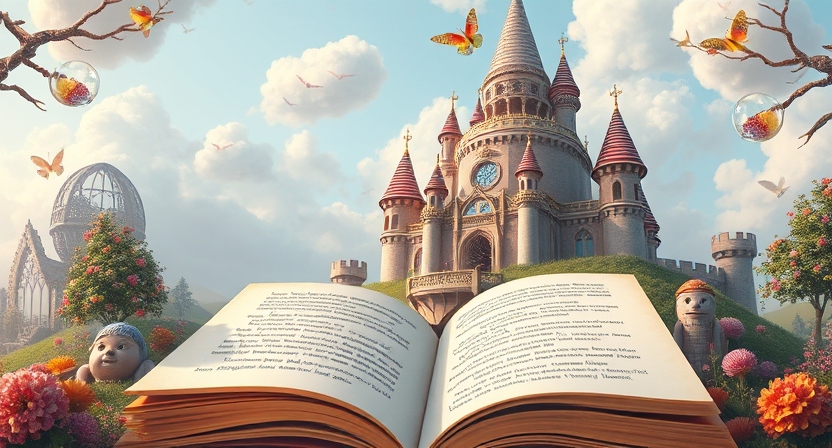
Significance of adaptation in filmmaking
Filmmaking, or video production, is a process of choice from the written story, the filmmaker chooses all elements of each scene, including location, characters, clothing, furniture, props, sound effects, background music, camera angles and movements, lens, lighting, and image framing. Because the printed word and the moving picture are two different kinds of media for communicating messages with their peculiar strengths and weaknesses, the filmmaker must be able to work on the written story for an effective video program.
A word is made of the simplest material, yet it may carry the most profound spiritual reflections, bringing alive all the treasures of nature and wisdom. On the other hand, moving images provide direct visual narration of the human experience. In a sense, cinema is a second language. Participants whose native language is either unspecified or is not the language in which the film is made can understand cinema only through the same kind of adaptation that polyglots use when reading or translating from a language they have learned.
At the heart of the adaptation process is the use of visual imagery to replace verbal descriptions of places, things, emotions, or thoughts. Depending on the intensity of the audience’s engagement with the content of a story and the speed of the story’s unfolding, these adaptation techniques range from close-ups of facial expressions or wall hangings to scenes filled with meaningful objects or atmospheres and thought-provoking music.
The adaptation process represents a shift from the passive form of visual narration from reading and processing descriptive text to an active form used in the assessment and analysis of visual evidence as told by fictional detectives. It is one of the things that make video stories effective. When analyzing how today’s students acquire information, it was realized that they are now able to process enormous amounts of information from different sources and they do it at a frenetic pace.
They process pictures, moving images, sounds, music, and small bytes of print. Their world is so different from what their predecessors were fed on large chunks of print-absorbed information and life experience at a decidedly slower pace.
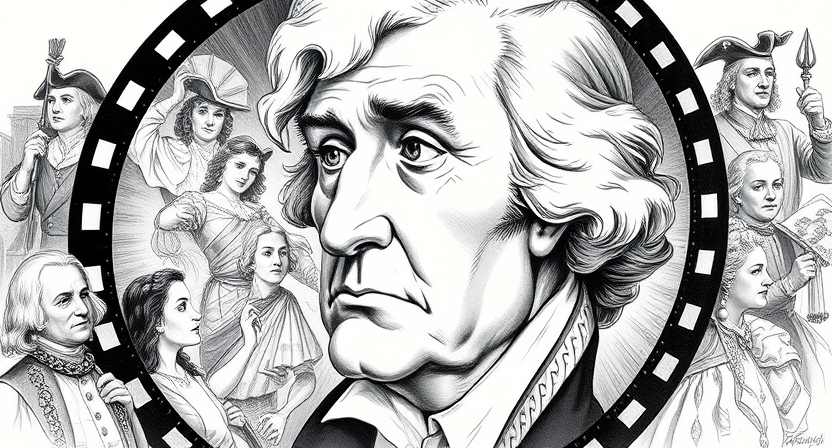
From Page to Screen: Key Stages in Adaptation
Selecting the Source Material
It is an extremely demanding and complex business with ideas often taken from other sources and built up into full-length films, sometimes involving the talents of hundreds of people from all around the world. Many sources go into films, including daily papers, television, and novels.
There is just so much material in the literary world for the cinema: novels especially written for the cinema, radio plays, collections of short stories, and biographies. Everything that tells a story can be used as a basis for a film. A time in history will see a film company write an original story, develop it, and finance it, but not so in the age of across-the-board overhead cutbacks, standards reduction, and profit slashing.
Of course, there are always thousands of reports in newspapers to be developed into exciting film subjects such as thrillers and biographies, and television is also a natural source of material, for not only does it turn out a constant supply of fact and fiction but often a first-rate program is written in standards already geared for cinema adaptation and so easily developed to be cinematically acceptable.
Films for adults are always best provided by the original cinema stories, though associations with the small screen often occur, with films made in association with the cinema of a particular television company.
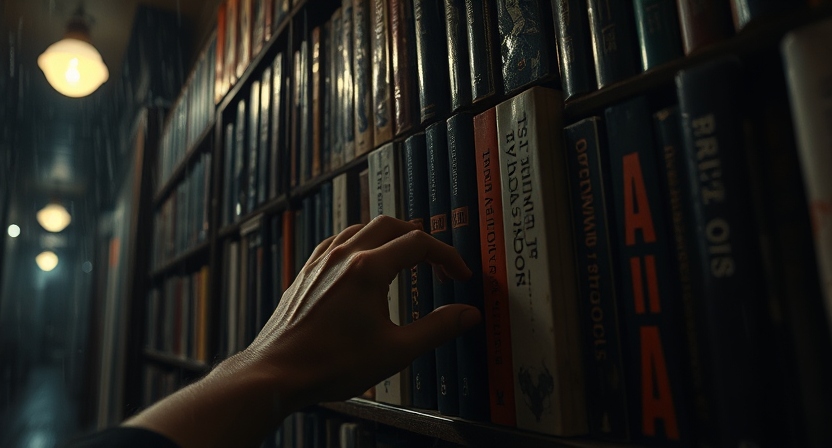
The Structure of the Story
In Hollywood’s rush to come up with good stories, one is likely to overlook the fact that a good story does have a structure, developed over thousands of years to serve the purpose of making a writer explore and convey his ideas effectively.
The overwhelming majority of films from mainstream centers in North America, Europe, and Asia, which attract critical as well as financial approval and receive awards, have fashioned this structure into their screenplays – although, very often, outlining a conventional blend plot where a three-act structure blends with a feel-good ending, an empathetic ensemble of star roles headed by a box office hero, and playing out a love interest scenario, and a production budget underpinned by a mass market appeal.
This can all be distilled into a very simple recipe that adheres to a tradition that ranges from the ancient Greek dictates of structure and spectacle, through the Elizabethan reins of the unity of time, place, and action, to the fifteen beats determined by different theorists, to the eight determined by others, and other screenwriting theories.
All good films conform to at least some of the above rules: they are basically about something that matters (for example, good versus evil, the nature and consequences of love, the problems of heroism, the quest for personal and social identity, fear and its consequences, the need for redemption or understanding, the search for a sense of well-being); they are explained by the images on the screen and – in successful adaptations at least – not by what are seen as solipsistic concerns of the screenwriter, director, or the key stars.

Identifying Key Themes and Messages
First of all, there needs to be a sorting of wheat from the chaff; most texts contain several themes and messages that need to be winnowed. After that has been done, it must be decided what comes first in the way of precedence. Adaptations tend to contain a good amount of material condensation; omission of less important themes and messages is not of much use.
The importance that is attached to a particular theme or message would probably be indicated by how often it is repeated or emphasized, its place in the work, or its space. A theme or message is more important if compared to those that are less often repeated or placed less prominently. After selecting which themes and messages the adapter understands to be mostly important, the next requirement is finding out what the differences are.
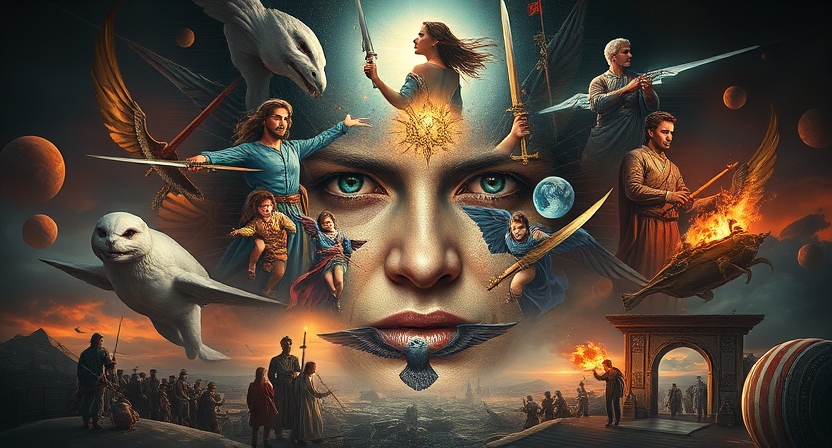
Develop the Graphic Story
The journey from story to video will depend on a good visual narrative. In a written story, words evoke emotion and action, but it’s visuals that bring that to life in videos, which, in turn, creates immersion.
Translation of Words into Images
Translate words into pictures, and tell the story in video form, but the process would begin by translating descriptive passages into pictures. Think forest described as “dense and foreboding.” On video, that might look like towering trees shot through with mist, shadowy outlines from a dull moonlight.
Every single word in a story carries the potential to inspire one vivid image. AI tools, such as storyboard generators and visual scripting platforms, can help creators conceptualize scenes by translating text into early sketches or animated sequences.
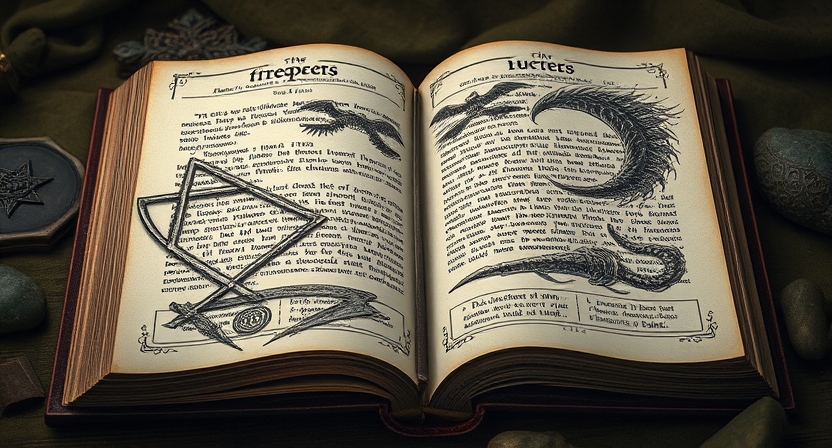
The Role of Cinematography
The cinematography brings life to the static images. It explains how the scene is composed, lit, and captured. Cinematography sets the tone of the film, from wide shots showing vast landscapes to close shots, which can show the strong emotions of a character. AI-powered tools can also suggest camera angles, and transitions, and even simulate lighting for the storyteller to be able to get the right feel for their scenes.
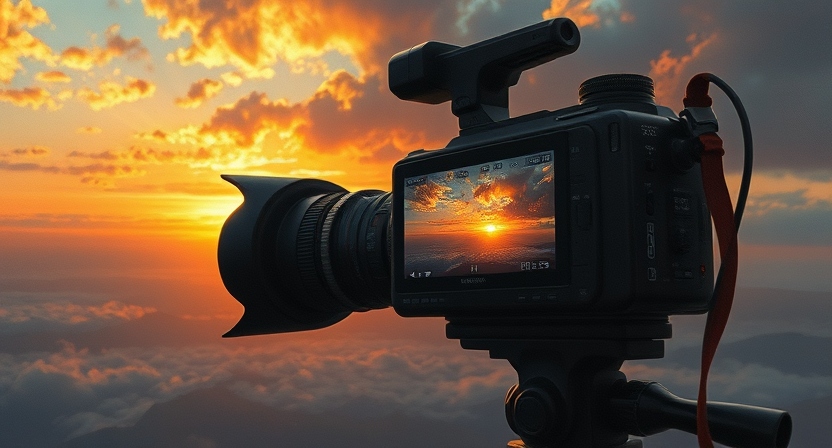
Developing a Visual Identity
Every video requires a consistent visual style, such as dark and gritty, vibrant and colorful, or minimalist and clean. The visual style should, therefore, reflect the themes of the story. A romantic tale, for example, can use warm tones and soft lighting, while a thriller favors stark contrasts and muted hues. AI-driven color grading software may be very helpful in this regard and can offer presets and adjustments tailored to specific genres.

Give life to your characters.
Characters are what a story is essentially made of, and the acting is what makes or breaks a story.
Character Development in Writing and Filmmaking
Character development fills in the gaps between the original story and its film rendering. In writing, authors are concerned about their characters’ thoughts, emotions, and what motivates them. On-screen, these characteristics must be manifested within actions, expressions, or dialogue. AI tools may include script analyzers, which help break down character arcs and suggest how these will be brought out visually and in terms of emotion in the film.
Casting and Character Interpretation
The right actor can give life to a character, and the character will be believable and relatable. AI casting tools are becoming popular as they match character descriptions with potential actors based on physical attributes, acting style, and voice tone. Beyond that, AI voice generators can be used to create animated characters, which can give them unique voices that are in line with their personalities.

The Sound of Storytelling
The audio elements are part of video making and can affect the feelings of the audience much more than the visuals.
Effect of Sound Design
It runs the gamut from echoing footfalls in a silent hall to far-off thunder before the storm. All these audio elements bring the viewer into the world of that story, to live inside the story. AI sound generators generate realistic sounds, saving all that effort while remaining authentic through every scene.
Music and Its Emotional Impact
Music is used to set the emotional tone of a story. This can be a haunting melody for a tragic moment or an upbeat tune for energizing a montage. AI music tools, such as Suno, help the creator create personalized soundtracks that align with the mood of their video. The tools analyze the narrative and then suggest melodies that would improve the viewer’s connection to the story.
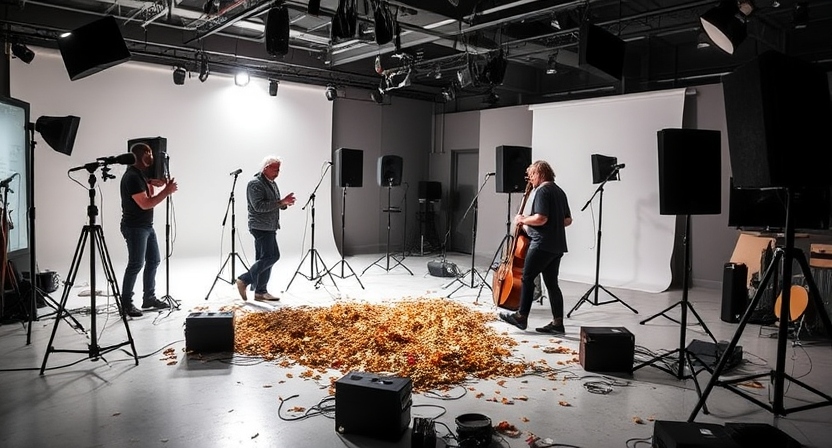
Technical Aspects of Filming
Good video storytelling mostly relies on the rock that is technical excellence with flawless audio and video integration.
Selecting the most suitable tools
Professional video production cannot be complete without good cameras, microphones, and stabilizers. However, not everyone can afford expensive equipment. AI tools bridge the gap by improving footage shot using budget devices, increasing resolution, and removing noise. Some even try to simulate professional-grade effects so that creators, with limited resources, can easily manage to achieve cinematic quality.
Lighting and Set Design
Lighting will create the ambiance of the scene: either warm and welcoming or foreboding and ominous to create suspense. Set design also indicates to the audience when and where the story takes place. AI-based lighting simulation software enables creators to experiment with lighting setups in virtual space before shooting. In set design, AI can even generate mockups of ideas related to layout, props, and color schemes.

Post-Production Magic
In the post-production stage, raw footage is converted into a polished, well-coherent story, meaning every detail aligns with the vision of the narrative.
Revisions and Tempo
The flow of the storyline is determined by editing cuts of unnecessary scenes and arranging footage to keep the viewers interested. The pace of a video is essential. When the video is slow, viewers lose interest and cannot sit through it again; if it is fast, they might miss very important moments. AI can assist with automatic timeline optimizers for software, which suggests cuts, transitions, and timings for adjustment according to emotional beats in the story.
Visual Effects and CGI
With VFXs and CGI, impossible things begin to happen. Alien lands to mythic beasts make all beauty for storytelling. AI in VFX helps what complex scenes require to simplify helping the people to have an even more real and explosive change for a scene of transformation from special effects, like magic change, to pattern change for the cloud cover that dramatizes a particular feeling of a scene from a movie.
Story Video Creation Through AI: Revolutionizing Content Production
This art has transformed since its inception. A whole new era in telling a story is opened by the digital world. Among these includes artificial intelligence, which translates the writing of stories to the most captivating videos in an effortless manner. It allows more free creative potential for a story videographer because such a method saves time and frees him or her to engage in their creativity as the technology takes care of everything.
In this article, we are going to discuss how the process of story-to-video generation happens with the help of a very powerful tool that makes this process easy, from text to a wonderful video. Features built into the platform to service various platforms and styles make AI a way of thinking for video production in general. We will see exactly how it works- from writing a script to downloading your perfectly polished video.
What is Invideo AI?
Invideo AI is the creative video generation platform to empowers creators, marketers, and storytellers by converting text scripts into visually appealing videos. You could be writing a story for an Instagram reel, a YouTube video, or a TikTok clip; Invideo AI makes it all seamless and accessible.
The platform automates the most important and advanced aspects of video production, namely background music, subtitles, voiceovers, and more; meanwhile, it leaves the user in full control over style and personal preferences. Let’s dive step by step into how Invideo AI brings your story to life.
The Process of Story-to-Video Creation with Invideo AI
1. Select the Title of Your Story or Topic
The first step in using Invideo AI is choosing the title or topic of your story. This is where your creativity takes center stage. Your title sets the tone and direction for the entire video. For example, if you’re crafting a fantasy tale, your title might be “The Enchanted Forest Adventure.” For a tech-related script, it could be “AI’s Impact on Everyday Life.”
It also lets you emphasize the theme of your video, which helps Invideo AI in its suggested styles and templates according to the genre and the mood of your story.
2. Copy your story or script
Once you have a title, you can paste your story, and script, or write your prompt into the platform. In video AI allows you to upload 3200 words so you have space to write as detailed and interesting a narrative as you can.
It’s a space where any written material can go- a short story marketing script or educational piece. The service scans through the given text to dissect it into logical units while identifying the main points of an essay that are visually pleasing for presentation.
3. Customization of Your Video: A World of Options
Invideo AI offers you a set of customization options so that each video is unique and according to your vision. After uploading your story, you can edit the video by choosing from the following features:
• Background Music:
It features an expansive list of tracks of music that can be chosen to heighten the mood of your story. Whether it’s a haunting melody for a thriller or a cheerful tune for a light-hearted tale, the platform suggests a list of curated tracks according to your script.
• Language:
Invideo AI supports multiple languages, allowing users to create videos for different crowds. It is particularly suitable for multi-linguistic content creators seeking to expand their audiences.
• Subtitles
Subtitles are very important for accessibility and viewer engagement. Invideo AI will automatically generate captions and subtitles for you, so even with the sound off, your message will be conveyed clearly.
• Voice Actors:
One of the features that make Invideo AI unique is its AI voice actor. You can choose tones and accents that will fit better into your story so it could be more relatable or even authentic. So for example, a serious, dramatic script may use deep and expressive voices, while a play or comedy script would use lively and cheerful ones.
• Watermark Text:
Add watermark text to make your video personalized or promote your brand. This feature is especially useful for content creators and businesses who want to maintain their identity across platforms.
• Music Preference and Style:
Besides minimal, noise-friendly background sounds, Invideo AI also lets you tailor-fit your preferred genres, or tempos and instruments that make up a soundtrack perfect to accompany your story.
4. Record the video and upload the changes
Once you’ve tailored your video using the options above, submit your preferences and let Invideo AI work its magic. The platform processes your input, matching your script to visuals, sounds, and styles in just a matter of seconds.
Meanwhile, the AI is always scanning the flow of the narrative so that visuals match it seamlessly. So if your story has a sunset in it, then the AI might even insert a vivid scene with a golden horizon in it.
5. Selecting Your Platform
After the initial video is generated, you’ll be prompted to select your target platform. Invideo AI supports multiple formats optimized for different social media channels, including:
• Instagram Reels
• TikTok Clips
• YouTube Videos
• Facebook Stories
Each platform has its dimensions, duration, and style; in that case, Invideo AI automatically changes your video to those specifications.
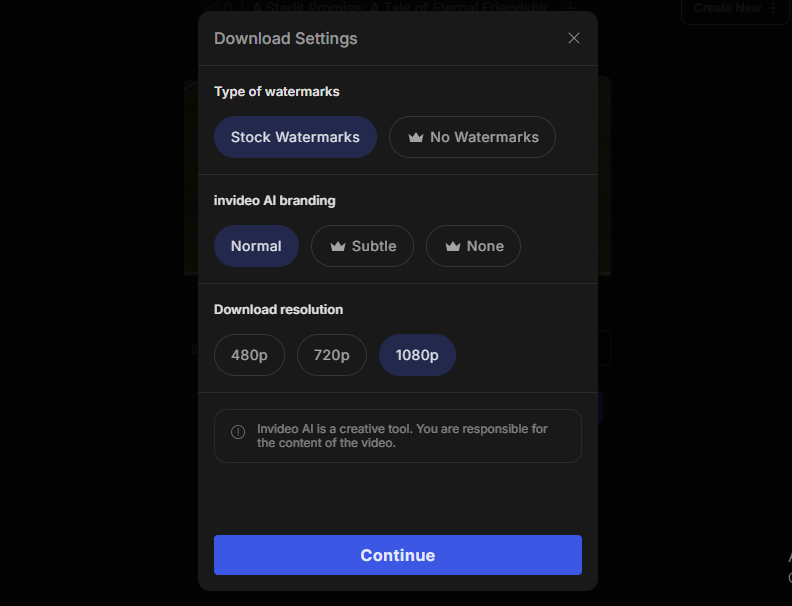
6. Download the video according to quality
After finishing the video, it’s downloaded in the resolution you require. In Invideo AI, you will find the following
• 480p: For instant sharing or websites that are not very particular about high definition.
• 720p: Sufficient for standard quality on most platforms.
• 1080p: Suitable for high-definition presentations and professional content.
This flexibility ensures that your video looks great, no matter where it is shared.
From Imagination to Reality: Stories That Come Alive
Jump into the world of creativity meets technology. Here are two exciting stories converted to breathtaking visual experiences with the power of AI video tools. Each of them is different, full of emotion, magic, suspense, and promises to take your breath away. Watch the videos below and read the original stories to experience the magic of storytelling!
Title: “Whispers in the Hollow”
~Download Video~
In a quiet village surrounded by ancient, towering woods, there was a place the villagers feared above all—Raven Hollow. Legends spoke of eerie whispers that called travelers into its depths, where they vanished without a trace. By day, the Hollow was unnervingly silent.
By night, it seemed alive with shadows that moved without cause.
Ethan and Mia, the adventurous teens, had been raised listening to such legends. A sharp autumn wind was howling, a challenge thrown at their courage when they decided that night to unravel the mystery behind the legends.
Brandishing a flashlight, an ancient compass, and a camera, they advanced on the Hollow’s entrance, marked by a wooden bridge. Its planks cracked and warped, and mist disturbingly curled around its edges.
“Last chance to back out,” Ethan teased, but his voice betrayed a bit of nervousness.
Mia smirked. “Scared? I thought you wanted proof.”
As they stepped over the bridge, a sharp chill swept over them. The trees in Raven Hollow were impossibly tall, their branches knitting together to block out the moonlight. Shadows danced across the forest floor, though there was no breeze to move them.
The deeper they went, the tighter the air became. The flashlight flickered, the beam fighting against the oncoming darkness. Ethan tried to shake it, saying, “Not now.”
Then came the first sound. A soft, melodic whisper, almost like a lullaby.
“Did you hear that?” Mia froze, her breath visible in the cold air.
Ethan nodded, his hold on the flashlight tightening. “Probably just the wind,” he said, but his words did not comfort him.
The whispers were growing loud now, a cacophony of voices that appeared to come from all sides. The words were blurred yet crystal clear: “Turn back… Leave… This is not your place.”
Mia’s hand trembled on Ethan’s arm. “We should go.”
The forest shifted before they could move, the roots writhing like snakes beneath their feet, the ground pulsating with a life of its own. The flashlight finally flickered one last time before dying on them altogether, plunging them into total darkness.
Ethan panicked and in a desperate act, switched the night mode on the camera. A greenish tinge had been cast upon the screen and something had fallen upon him there—a figure was visible in the trees. The woman had a skin of ash, with eyes full of blackness. Her mouth curled into an unnaturally wide, crooked smile.
“She is here,” Mia said softly, hardly audible.
The woman moved without walking, slid closer, and her whispers were louder. “Why do you disturb my forest?” she hissed, and her voice sounded unnatural.
Ethan grasped Mia’s hand. “Run!”
They ran through the forest, dodging roots that lashed out like whips. The whispers grew into a deafening chorus, each word a warning: “You cannot escape.
Through the chaos, they found themselves in a clearing. In the middle of it was a stone monolith, covered in glowing, ancient runes. The air around it vibrated with dark energy.
“She’s bound to this,” Mia said, shaking.
Ethan was to say nothing before the woman appeared again, her form rising from the shadows. “You cannot destroy it. You will stay here… forever.”
Mia saw a crack in the stone, almost imperceptible but there. Desperate, she grasped a heavy branch and swung it at the monolith. The impact caused the runes to flicker, and the woman let out a scream—a sound that cut through their ears like shards of glass.
“Keep going!” Ethan shouted, running to Mia. Each blow made the monolith crack further, and the woman’s shape flickers like a dying shadow.
Finally, with a deafening crack, the stone shattered. A burst of light erupted from it, forcing Ethan and Mia to shield their eyes. When the light subsided, the whispers were gone, and the forest was silent once more.
Exhausted, they staggered back to the bridge. The Hollow behind them seemed to retreat, trees receding into the shadows.
“I am never going back there,” Mia muttered, clinging tightly to Ethan’s hand.
As they stepped onto the bridge, they did not notice the indistinct silhouette of the woman standing at the edge of the forest, hollow eyes staring at them, the voice carried by the wind: “This is not over.”
Title: “The Crystal of Elarion”
~Download Video~
In a land where the skies were tinged with gold and violet, the enchanted kingdom of Elarion lay. Deep in the heart of the forest, there was a crystal known as the Heart of Elarion, holding the balance of magic and life in the kingdom. However, dark forces sought to claim it.
One fateful night, a dimming of the light of the crystal indicated its disappearance. Princess Seris was a redhead with flaming tresses and a heart full of courage who knew she had to act. Mounting her silver-winged steed, Astra, she soared into shadowy woods.
She headed into a decayed ruin; dark power surged to fill the air, and a figure was standing inside this patch. He covered himself; but by whatever shroud, it was worn clear that his name was Kaine, rogue sorcerer: his black eyes illuminated as he incanted to the spell to siphon from the crystal.
“You go too far, Kaine!”Seriess cautioned; she drew out her sword, the sword glowing bright like the kingdom.
Kaine turned, his voice dripping with malice. “You think you can stop me, little princess? The power of Elarion will be mine!”
The battle had begun. Seris flung herself at Kaine, her sword striking against his staff with sparks of light and shadow through the air. Kaine conjured tendrils of dark magic, but Seris spun and caught them against her shield.
Astra, her loyal steed, joined the fight, swooping down to knock Kaine off balanceSeriesis took advantage of the moment with her sword slicing through the dark energy surrounding the crystal.
But Kaine wasn’t through yet. He threw a tremendous amount of shadow, which sent Seris back. At the last second before she collapsed, she remembered what her mother told her: “The real power of Elarion lies not in the crystal but in your heart.
Summoning all her courage, Seris raised her sword and tapped into her inner magic. Her blade ignited with golden light that blinded Kaine. She struck the ground, causing a radiant pulse that smashed Kaine’s staff into pieces and engulfed him in a vortex of light.
The glow of the crystal returned as the dust settleSeriesris carefully placed it back in its altar, feeling the forest catch its breath once again. Kaine was gone; Seris knew he would not be back anytime soon.
With Astra by her side, she returned to Elarion and was hailed as the kingdom’s savior. Though, deep in the shadows, a faint whisper stayed there, reminding me that the struggle for balance was never really over.
Advantages of Using AI in Creating Stories-to-Video
AI has changed the way things used to be done. They improved the creative process. Of course, turning an imaginative story into a pretty cool video is among such transformed processes. And yes, it has lots of advantages: from streamlining workflow to encouraging creativity through everything. Here is its detailed advantage in innovative creations: stories to videos.
1. Time Sensitive: Faster Production
AI-powered video generation tools greatly reduce the time it takes to create professional-quality videos. Traditional video production often requires long processes, such as script breakdowns, manual editing, and sound design. AI automates these tasks, allowing creators to produce videos in minutes. This efficiency is priceless for content creators working on tight deadlines or marketers looking to capitalize on timely trends.

2. Cost-Effective Video Production
Hiring a team of professionals for scriptwriting, cinematography, and post-production is very costly. AI tools are cost-effective as they can execute several tasks with accuracy. With almost negligible investment, one or an organization can make a video that appears to be professional. Thus, AI is accessible to start-ups, small organizations, and solo creators.

3. Creative Freedom and Customization
AI tools allow users to focus on the creative vision rather than the technical details. Invideo AI has many options for personalization in the form of visual styles, background music, and voiceovers. This balance between automation and personalization empowers the creators to make videos that would match their unique style of storytelling and aesthetic appeal.
4. Accessibility for Non-Experts
One of the biggest advantages of AI is making the complex accessible to everyone irrespective of technical skills. Applications of AI have been developed with easy interfaces that step the user through video creation step by step. Such democratized videomaking has enabled storytellers, educators, and entrepreneurs to create videos that bring significant impact without any understanding of cinematography, image generation, creation, and editing.

5. Smooth Compatibility with Diverse Platforms
AI resizes videos with varied use cases. It gets Instagram reels, TikTok, or YouTube content ready in that its dimensions, durations, and styles will meet a specific requirement of the platform while this allows the content to stand great and be highly relevant among the target population.
6. Best Picture and Audio Quality
AI uses advanced algorithms to match visuals, the soundtrack, and voiceovers to the tone and mood as described in the script. So, every element of this video will add to the emotive value of the narrative. AI-generated visuals and audio are often of professional-grade quality, making the video generally more appealing.

7. Inconsistency Across Projects
This is difficult for brands and creators who produce multiple videos. AI tools make it easier, they provide templates and preset preferences so that all the videos are in a cohesive style. This helps businesses set up a visual identity that is recognizable to their audiences.
8. Wider Accessibility to Diverse Audiences
AI tools allow for supporting multiple languages, captions, and subtitles as well as voiceover, which allows creators to speak across different regions and demographics to audiences. This aspect would be used particularly for global marketing campaigns or content intended for multilingual markets.
Conclusion: Create Videos from Written Stories
The ability to create videos from written stories has transformed the art of storytelling. With advancements in script-to-video AI, turning a narrative into a visual masterpiece has become an exciting and accessible reality. Whether you’re looking to convert children’s storybooks into videos or generate thrilling story videos, AI-powered tools make the process seamless and innovative. These tools, like Invideo AI, allow creators to create video stories with AI and bring their written words to life with stunning visuals.
For aspiring storytellers, AI opens up opportunities for automated video creation, offering features like AI VFX and tools to create horror story videos or even create a lyrics video with AI. Whether you’re a marketer aiming to make marketing videos with AI or a writer wishing to visualize your narrative, AI tools have made this transition easier than ever. With the best video maker for social media, even amateurs can create engaging content, while professionals can use good apps for movie making to craft cinematic experiences.
Platforms like Invideo AI also cater to those wanting to explore free filming options or seeking the best AI tool for content creation. From script to video generation to transforming ideas into reality, the creative possibilities are endless. With such tools, anyone can learn how to create a good video, leveraging technology to captivate audiences with compelling visuals.
If you’re a storyteller, exploring these tools will enable you to convert written stories into videos effortlessly. The fusion of creativity and AI ensures that every story finds a new dimension through video. Whether you’re creating for entertainment, education, or marketing, these tools simplify the process and elevate the impact of your content.

Author’s Insight
Sharjeel Jadoon is the visionary behind TrendtoAI, a website that is dedicated to making artificial intelligence accessible and understandable to everyone.
He sheds light on clear, practical content and strives to bridge the complex AI tools with the everyday user.
This passion for innovation goes hand in hand with empowering others through knowledge. Read more…

